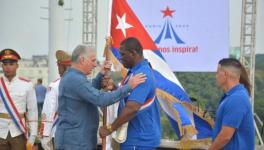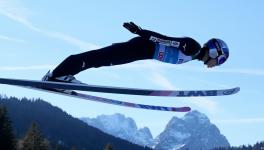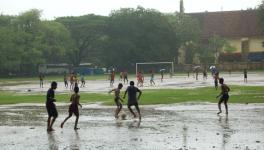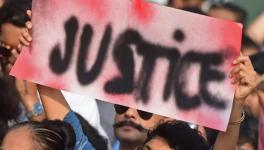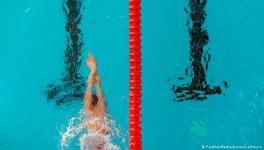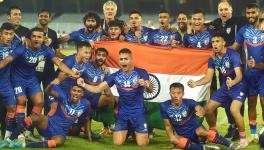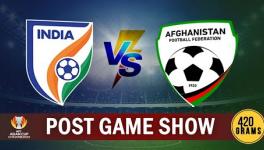Name: Indian Football Team; Place of Birth: The Olympics
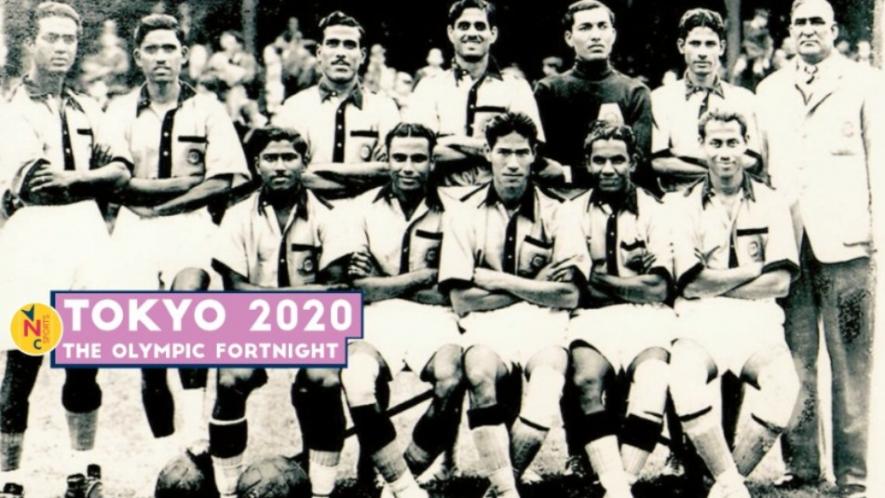
Post independence, the first football teams to represent India played barefoot, even at the Olympics. While the entire world thought it was amusing, the Indians took pride in it and notched up some important victories as well.
Described as the “best hotel in the east of the Suez” by Mark Twain, the Great Eastern Hotel, Kolkata, played host to several important meetings in its 180-year-old history. Mahatma Gandhi camped here for around a fortnight during a trip to the city in 1896 to meet senior Congress leaders. In the post-independence era, huge political personalities like Ho Chi Minh and Nikita Khrushchev found the hotel the most suitable venue to exchange views with their Indian counterparts.
The hotel had a significant role to play in shaping India’s football history too. On March 30, 1947, in the annual general meeting of the All India Football Federation (AIFF) held at Great Eastern, a decision was taken to enter the national team in the 1948 London Olympics.
Though the AIFF was constituted in 1937, Indian football, till Independence, was all about competitions at the club and state level. The concept of a national team was non-existent. Pride and glory was confined to beating India-based British clubs and military units. Indian football hardly had any contact with the outside world, except for a few unofficial tours to Australia, Burma and South Africa.
Click | For more from ‘Tokyo 2020, The Olympic Fortnight’ series
India didn’t exactly start their international journey with a bang but there was enough curiosity, although for an entirely different reason. The Indian team that played in the London Olympics and lost to France 1-2 in the opener on July 31, was a combination of mostly barefooted players.
While the entire world thought it was amusing, the Indians not only took pride but also notched up some important victories at the international level playing barefoot. The most important triumph was the gold medal finish in the inaugural Asian Games in Delhi, 1951.
The London Olympics participation in 1948 was not an easy task though. The cost was estimated to be around Rs. 1 lakh and the AIFF was cash strapped. The Indian Football Association (IFA), the parent body of Bengal football, came to AIFF’s rescue, partly. It contributed Rs. 40,000 while the associations of Bombay and Mysore pitched in with Rs. 10,000 each.
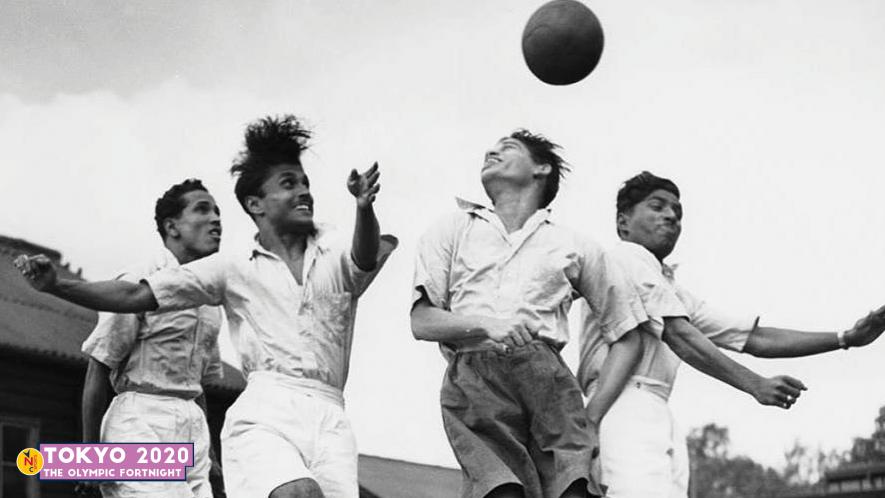
40 players were called to attend the preparatory camp in Shillong from April 20. Nagaland’s Dr. Talimeren Ao, a House Physician with the Carmichael Medical College (now RG Kar Medical College) in Kolkata, and a brilliant centre-half with Mohun Bagan, had the honour to be chosen as independent India’s first captain.
The barefooted team generated a lot of publicity but not the desired result. On July 31, India played gallantly against France and lost. They gave the match away in fact – India were awarded two spot kicks and the experienced Sailendra Nath Manna and Mahavir Prasad sent the ball over the crossbar.
A British journalist, writing for an Indian periodical, observed: “The Indians were dominating the game right from the start…….but the Indians were so weak in shooting at the goalmouth that they disappointed their 10,000 supporters time after time. Were the Indian forwards never taught to do sharpshooting with their feet but only to dribble their way into the net?”
Also Read | The Walk: An Olympian, a Worker and a Home Yet to be Defined
Olympic football, then, was strictly for amateurs with no age restriction. India, naturally, attached great importance to the meet. Two years after the London Olympics, India qualified for the World Cup in Brazil but didn’t send the team. Sailen Manna, who was India captain for six years in a row between 1949-54, later said he didn’t realise the importance.
“For us, the World Cup was a distant thing, we were more focused on the Olympics. We were proud to have represented the country in the Olympics,” said Manna, who skippered India in the Helsinki Games of 1952 and two Asian Games.
Well, the pride of playing the Olympics was certainly there, but not the performance. Indian football team played the Olympics till Rome 1960. Thereafter, as the qualification turned tougher, India could never make the main stage.
In a series of disappointments since Independence, 1956 Melbourne and 1960 Rome were the two bright spots. In Melbourne, India achieved their lone victory till date, beating hosts Australia 4-2 in the opener on December 1, and managed to earn fourth spot in the end. Prolific striker Neville D’Souza from Caltex Bombay was the hero of India’s campaign with a stunning hat-trick against Australia.
D’Souza was a centre forward with tremendous ball skills. Extremely dangerous in the penalty box, he had the ability to get past at least two defenders whenever he had possession. A footballer with a classical touch, who never believed in playing a physical game, D’Souza was equally proficient both in football and hockey during his school days at St Xavier’s, Bombay. After playing for Tata for a few years, he joined Caltex in the mid-50s and formed a lethal combination with his brother, Derek, who, too, represented India in the ’60s.
It is a pity that D’Souza’s international career did not extend beyond the late 1950s. He was not even called for the Rome Olympics trial camp. While it was alleged in some quarters that he was not in the good books of coach SA Rahim, D’Souza did not do himself any favours by leading a life unsuitable for a footballer. He didn’t play much football after 1963, and died at the age of 47, in 1980.
In Melbourne, India reached the semifinals on the strength of the win against Australia. In the penultimate round tie, they lost to Yugoslavia 4-1 and then to Bulgaria in the bronze medal encounter. It was considered a good show from a team who were humiliated 1-10 by Yugoslavia four years ago in Helsinki.
Rahim coached India in three Olympics and Rome was definitely the best. Captained by winger PK Banerjee, India were pitted in a strong group that had France, Hungary and Peru. Critics rated the Indians highly when they drew 1-1 with France and narrowly lost to Hungary. Peter Thangaraj, Jarnail Singh, Arun Ghosh, Yousuf Khan, Banerjee, Chuni Goswami and Tulsidas Balaram formed the core of the squad, who went on to win the Asian Games gold medal two years later.
Also Read | No More than a Billboard: Mohun Bagan’s Myopia Encapsulates New India
It was the last hurrah! In the next 60 years, India had little to offer. Reduced to play the pre-Olympics, they often bowed out without a fight. On a few occasions, like in 1980 and 1983, they did raise some hopes before being knocked out in crucial matches.
In the 1983 pre-Olympics, Ciric Milovan’s India beat teams like Indonesia and Singapore before getting drubbed 0-5 by Saudi Arabia. The match at Riyadh was played on artificial turf. Not for a day the Indian team management could arrange training for the boys on a similar turf. Even the necessary playing boots were unavailable. India conceded three goals in the first 15 minutes.
Before the 1980 qualifiers, the preparatory camp in Bengaluru was a hotchpotch affair. The living conditions for the footballers were poor, lunch and dinner were served at the Kanteerava Stadium canteen. Placed in a tough group, India lost narrowly to China, Iran and North Korea. The only match they won was against Sri Lanka with Xavier Pius scoring a brilliant hat-trick.
Also Read | Dichotomy of Gold: India and the Moscow Olympics
In the current scenario, India’s chances of playing Olympic football could at best be described as a distant dream. An age group tournament since the 1992 Olympics, the qualification process from Asia has become much tougher. Only the four semifinalists in the AFC under-23 championships are eligible for berths in the Olympics.
In the battle for 2020, India could not come anywhere near it. Resounding defeats against Tajikistan and Uzbekistan in the qualifiers were enough to derail the Tokyo dream for the team, who, according to AIFF president Praful Patel, is preparing to play the 2026 World Cup.
Get the latest reports & analysis with people's perspective on Protests, movements & deep analytical videos, discussions of the current affairs in your Telegram app. Subscribe to NewsClick's Telegram channel & get Real-Time updates on stories, as they get published on our website.









